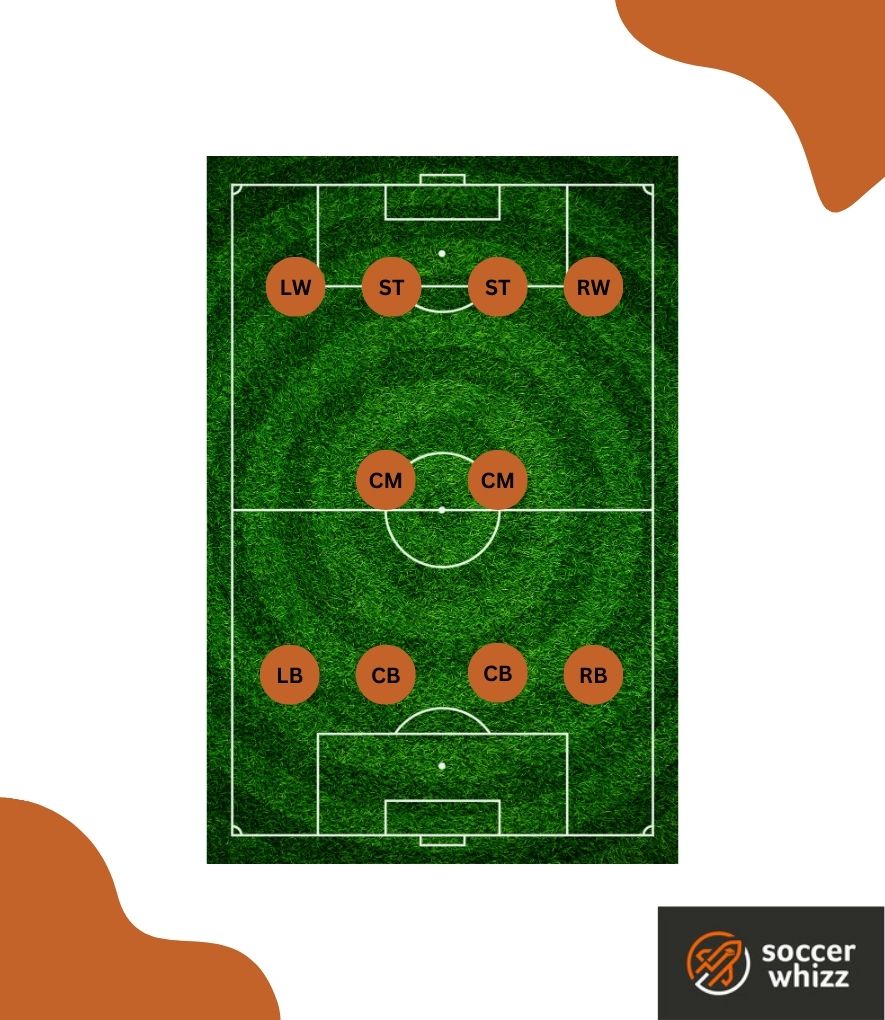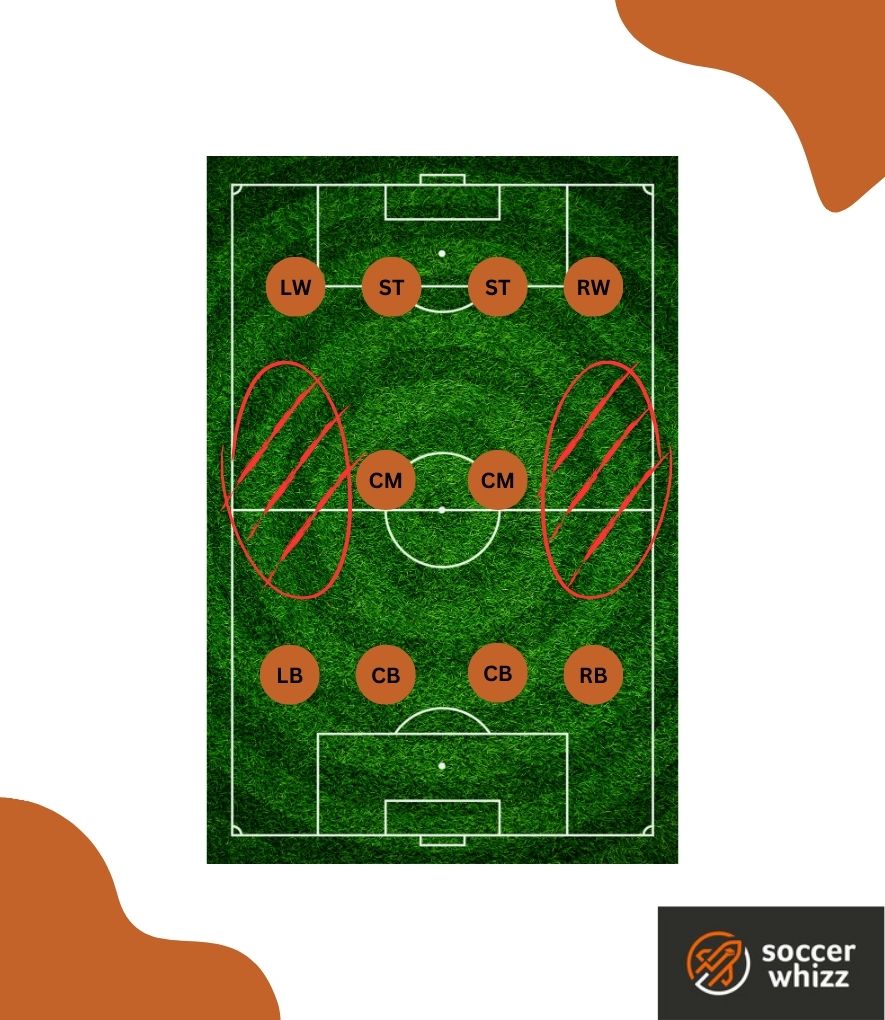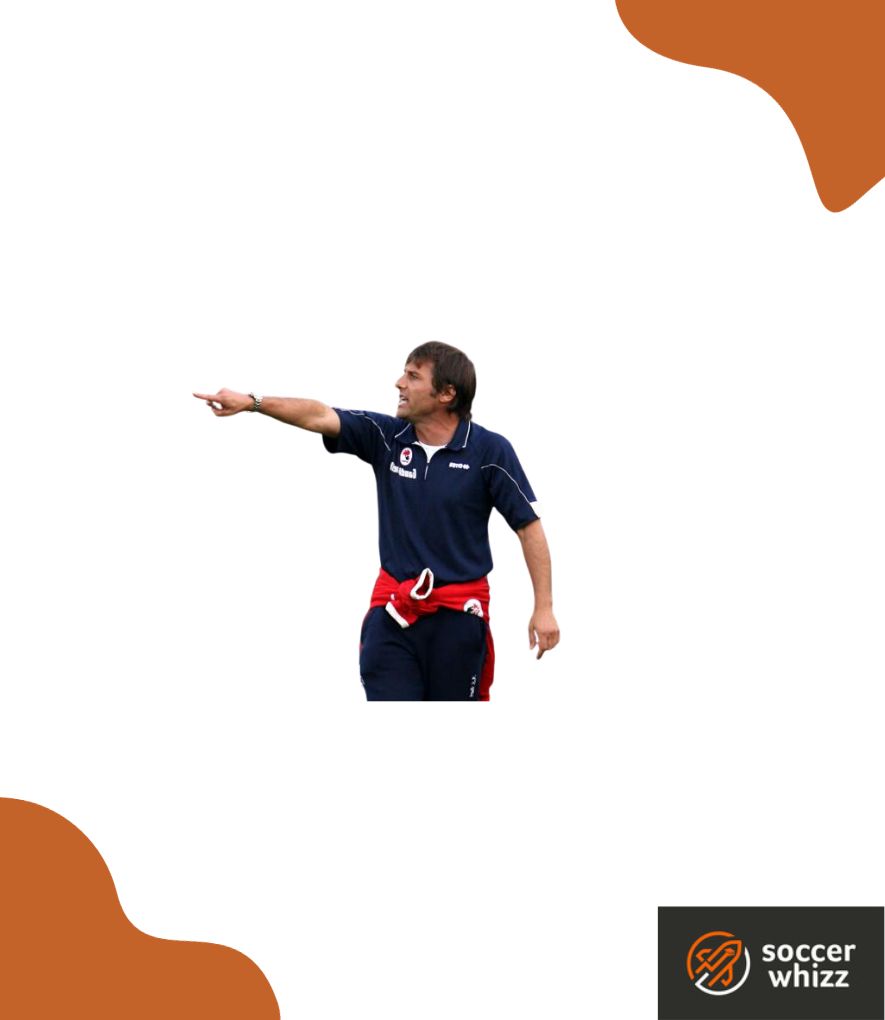In the ever-evolving landscape of soccer tactics, the 4-2-4 formation has stood the test of time as a relentless offensive powerhouse.
Renowned for its emphasis on attacking flair and goal-scoring prowess, this formation has enthralled fans and challenged defenders since its inception.
In this comprehensive article, we delve deep into the intricacies of the 4-2-4 formation, exploring its historical origins, tactical principles, and the players who have illuminated the pitch with its dynamic play.
- How does a 4-2-4 soccer formation work?
- What are the benefits of adopting a 4-2-4 shape?
- What are the downsides of using the 4-2-4 system?
- Which soccer teams have used a 4-2-4 as their primary formation?
- Can the 4-2-4 system be countered?
- Would a 4-2-4 formation work in modern day soccer?
- Closing thoughts
How does a 4-2-4 soccer formation work?
In essence, the 4-2-4 formation is composed of four defenders, two midfielders, and four attackers, resulting in a predominantly offensive setup with a strong presence in the opposition’s final third.

The defensive line comprises a right-back, two center-backs, and a left-back, forming a solid foundation at the back.
Positioned just ahead of them are the two central midfielders, assigned primarily defensive duties.
These midfielders operate as a double pivot, with a focus on shielding the defenders, intercepting opposition attacks, and distributing the ball to teammates higher up the field.
The attacking contingent consists of two central strikers, who mainly operate in central areas, accompanied by two wingers.
The wingers’ role is similar to that of wide midfielders in a 4-4-2 system, but with a greater emphasis on supporting the central forwards during attacking moves.
What are the benefits of adopting a 4-2-4 shape?
At its essence, the 4-2-4 formation is tailored for counter-attacking football, maximizing the opportunities when the opposition is caught off-guard.
Its primary strength lies in creating overloads in advanced sections of the field, with four attacking players strategically positioned to capitalize on any chances that arise.
These attacking players not only excel in pressing the opposition defenders but also possess the agility to win loose balls and exploit spaces in the channels.
The formation’s attacking prowess makes it an alluring choice for coaches whose tactics revolve around fast-paced counter-attacks.
Moreover, it proves beneficial for managers blessed with a surplus of attacking talents but perhaps lacking depth in the midfield; the 4-2-4 formation offers the means to field more forward-thinking players.
Additionally, the 4-2-4 formation provides a key advantage when facing an opponent’s attack.
As the opposition’s full-backs push forward from their starting positions, the two wide forwards in the 4-2-4 shape are often left unmarked, presenting an opportunity to inflict significant damage.
These unmarked forwards can establish overloads in advanced areas, creating multiple goal-scoring threats that can keep the opposing defense under constant pressure.
What are the downsides of using the 4-2-4 system?
The central midfield battleground is often the determining factor in soccer matches, where games can be won or lost.
A central midfielder’s skill set must be multifaceted, encompassing passing precision, ball interception, progressive ball movement, and dynamic mobility.
These demands are magnified when operating within a double pivot formation, where only two central midfielders carry the responsibility.

Within the 4-2-4 double pivot, the two central midfielders can potentially face isolation, requiring them to execute their roles with exceptional competence.
Their agility, quick reflexes, and positional adaptability become vital as they cover extensive areas of the pitch and provide support to teammates in various regions.
Consequently, a team deploying the 4-2-4 formation must entrust this crucial role to highly capable central midfield players.
Similarly, the winger roles in this system are equally demanding.
Wingers operating in the 4-2-4 formation must possess explosive bursts of speed, excellent crossing abilities, and the consistency to deliver impactful final products.
Given the scarcity of counter-attacking chances, teams must capitalize on each opportunity, highlighting the significance of competent wingers in this setup.
However, the 4-2-4 formation’s heavy focus on both attack and defense, with a relatively vacant midfield, leaves it susceptible to well-organized and defensively solid opposition.
The double pivot can often find themselves exposed and outnumbered by a three-man midfield, leading to potential challenges in maintaining control over the game.
Embracing the 4-2-4 formation effectively means relinquishing possession to opponents for extended periods, a strategy that may not align with modern coaching philosophies.
In today’s game, coaches generally seek to balance attacking prowess with midfield stability, making the 4-2-4 less popular due to its inherent challenges and strategic trade-offs.
Which soccer teams have used a 4-2-4 as their primary formation?
Here are a few real world examples of the 4-2-4 formation in play:
1.Brazil
The roots of this formation trace back to mid-20th century Brazil, where it initially gained prominence.
By the year 1970, the Brazil national team had honed this system to perfection, culminating in a World Cup triumph.
The tactical principles of the 4-2-4 formation harmonized seamlessly with the remarkable skills of legendary players such as Pele and Garrincha, resulting in a captivating brand of free-flowing attacking football.
2. Bari
Antonio Conte’s implementation of the 4-2-4 formation at Bari was characterized by its attacking intent and high pressing style.

The formation featured four forwards upfront, offering a dynamic and aggressive approach to break down opposing defenses.
The forward line often comprised two central strikers, flanked by two wingers operating wide in advanced positions.
3. Siena
At Siena, Conte’s implementation of the 4-2-4 formation was characterized by a high-intensity pressing style and an emphasis on quick attacking transitions.
The formation featured four forwards upfront, comprising two central strikers and two wide players positioned as wingers.
Can the 4-2-4 system be countered?
The 4-2-4 formation’s notable weakness lies in its limited capacity for possession-oriented football.
When facing a team employing this shape, the key strategy is to focus on maintaining possession and asserting dominance in midfield, as it proves to be the most effective approach.
Concentrating efforts in midfield can exploit the vulnerabilities of the opposition’s double pivot, exposing their lack of balance.
Overwhelming the two central midfielders with a 3-man midfield setup increases the likelihood of controlling possession and dictating the tempo of the match.
Formations such as 4-3-3 or 4-2-3-1 are well-suited to accommodate this tactic effectively.
Another area to exploit in facing the 4-2-4 formation is out wide.
With high-positioned wingers and deep-lying full-backs, the 4-2-4 leaves significant gaps on the flanks, especially towards the center circle.
By prioritizing the attacking line and the back four, this formation compromises its ability to compete effectively in midfield, both centrally and in wide areas.
More so, the positional fluidity of this system can become problematic; the advanced positioning of wingers hinders full-backs from overlapping effectively, and the absence of a dedicated attacking midfielder makes it challenging to establish a seamless link between defense and attack.
Would a 4-2-4 formation work in modern day soccer?
The effectiveness of a 4-2-4 formation in modern-day soccer would depend on various factors, including the team’s playing style, the quality of players available, and the tactical approach of the coach.
While the 4-2-4 formation has historical significance and can be a potent attacking setup, it does come with certain challenges that might make it less commonly used in modern football such as lack of midfield control and defensive vulnerabilities.
Closing thoughts
To wrap things up, the 4-2-4 formation holds a unique place in soccer history as an attacking setup that has produced memorable moments and achieved significant successes.
Its rich legacy from the past, particularly in the mid-20th century, has left an indelible mark on the sport, showcasing the power of a fearless and aggressive approach to the game.
While the 4-2-4 formation may not be as prevalent in modern-day soccer, its principles and tactical nuances remain intriguing.
The emphasis on an expansive attacking quartet, swift transitions, and overloading the flanks can still find relevance in certain game situations and with the right blend of players.
If you enjoy the content that I create and would like to buy me a coffee, then I’d really appreciate it!
Any money that I earn through this donation will be re-invested into more content for this website.
Additionally, by sending in a donation you’ll also receive a copy of my recently released 190+ page eBook on Soccer Ball Care, as well as be subscribed to our mailing list where you’ll be regularly informed on the latest developments concerning the Soccer Whizz blog.
- Future Icons: Europe’s Emerging Midfield Maestros Set for Glory - December 4, 2023
- Kickstarting a Revolution: How Soccer Transformed the United States Over the Last Four Years - October 7, 2023
- 4-1-4-1 Soccer Formation [Analysis] - September 23, 2023

